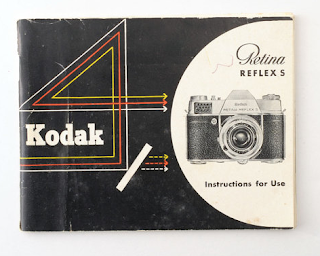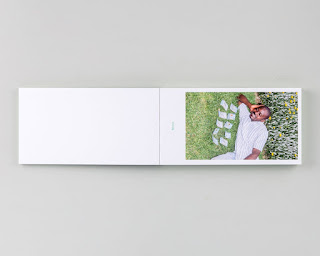An important aspect of the design for Amateur Analog will be the bind
used to hold the book together. The bind can indicate much about the
book before its even been read so its important to get this right. I
have already decided that the pages will be the size of photographs at
6"x4" in a landscape format, so it was mainly a matter of how best to
showcase this.
I have experimented with several
different types of bind before choosing to actually have the pages
'loose leaf.' This is in order to have the pages resemble a collection
of photos held in a pouch. This would technically involve
breaking the brief, which suggests it must use a bind, however this seems necessary to create the most authentic style for my book.
Bind Experiments:
Hardback:
The
hardback trial worked in some respects as it gives the book a
'professional' aesthetic, making it feel clean and protected - almost
like a camera case. However in other ways it seems to make the content
too mature. In actuality the guide is fairly simple and informal, its
targeted at amateurs and the information inside is far from definitive -
making the hardback approach less appropriate.
Pamphlet Stitch:
If
I was to use pamphlet stitch it would be used landscape, in order for
the pages to feel more like photographs. Although this would go better
with the informal approach, it might appear too 'easy.' It would not be
reflective of the technical designs that would lie on the inside pages.
Pamphlet stitch is traditionally used for zines and I wanted this guide
to have a more unique approach.
Coptic Stitch:
Coptic
stitch was also trialed, which did capture the technicality of analog
use. However it felt too exposed and didn't link to the Analog process
particularly. I also was debating using glossy paper which would be
particularly difficult with coptic stitch.
Loose Leaf Envelopes:
I
wanted to create an envelope similar to the one you get given by Boots
when you print images. So I made several nets testing different shapes
that could be used to hold loose leaf pages. The first design was a fair
replica of the one you'd usually be given by Boots, which has an
authenticity to it (1). But after a few more trials I created a square, angular
design (2) which can be opened to see images inside, involving a spine too
which could then be easily place on a book shelf. This would eventually
be made with card to maintain a box aesthetic.
This was the most
successful as it took a more unique approach and applied the brief from
an unexpected angle, that will hopefully suite the content most
effectively too.
 |
| (1) |
 |
| (2) |




































